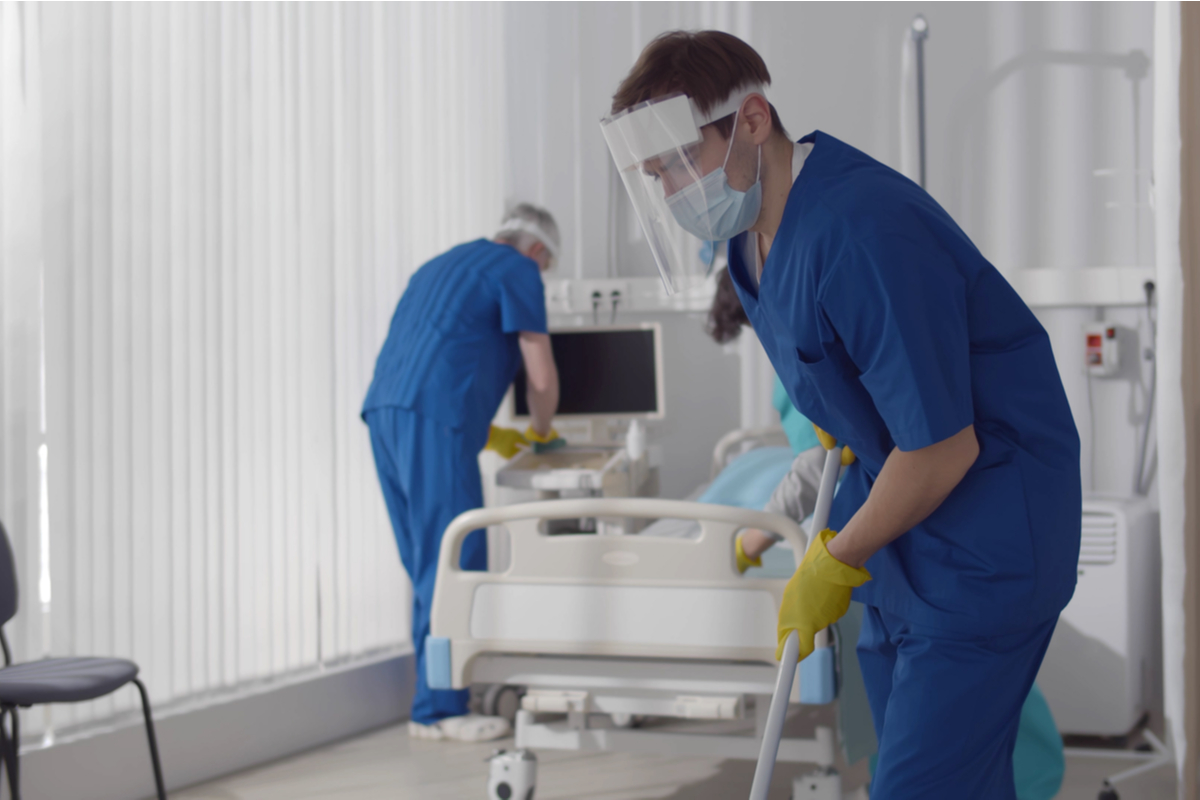
Guidelines for Healthcare Facilities During COVID
Properly Training and Equipping Your Janitorial Staff
Before COVID, healthcare facilities already had their dangers in the form of healthcare-associated infection (HAI). According to CDC data, 1 in 31 hospital patients suffers from am HAI. During the era of coronavirus, though, cleaning and disinfecting healthcare facilities have taken on even greater importance. A properly trained and equipped janitorial staff is an essential weapon in fighting the spread of COVID. The CDC recommends the following as best practices for the cleaning and disinfection of healthcare surfaces. Make sure your team receives training and conforms to these practices. It will better ensure a safe environment for employees and patients alike.
The First Step: Cleaning
Cleaning will remove dirt, dust, debris, and other organic material from surfaces. It can remove micro-organisms as well. However, this is essentially making the surface less hospitable to their proliferation. Be sure to use industrial-strength vacuums with HEPA filters. These filters can remove 99.97% of airborne particles. Mopping should be a two-bucket process to keep waste separate from fresh cleaning solution. Also, make sure to clean mops after each use and allow them to dry completely. Janitorial teams should also be wearing appropriate personal protective equipment at all times.
Step Two: Disinfection
While cleaning can remove some micro-organisms, disinfection actually kills them. Special attention should be paid to high-touch surfaces. These include door handles, stair railings, and countertops, as well as all patient treatment areas. The CDC recommends using the EPA’s List-N as a guide to which disinfectants are effective against COVID-19. Bioesque’s Botanical Disinfectant Solution is on this list and features a 55-second kill time against SARS-CoV-2, the virus that causes COVID-19.
Step Three: Proper Handling of Medical Waste
All medical waste such as blood and other bodily fluids, used medical supplies, specimens and cultures, etc. must be designated as medical waste. Additionally, they must have specific handling and disposal procedures. Janitorial teams should receive training in order to recognize medical waste. Furthermore, if they have to handle or dispose of it, they need training in those procedures as well.
Janitorial services for healthcare facilities are a special set of skills and teams should be trained accordingly. OSHA, the EPA, the CDC, JCAHO, and other regulatory organizations all have standards in place that crews must be made aware of. Their protection, as well as the protection of patients, staff, and visitors, is of utmost importance.
